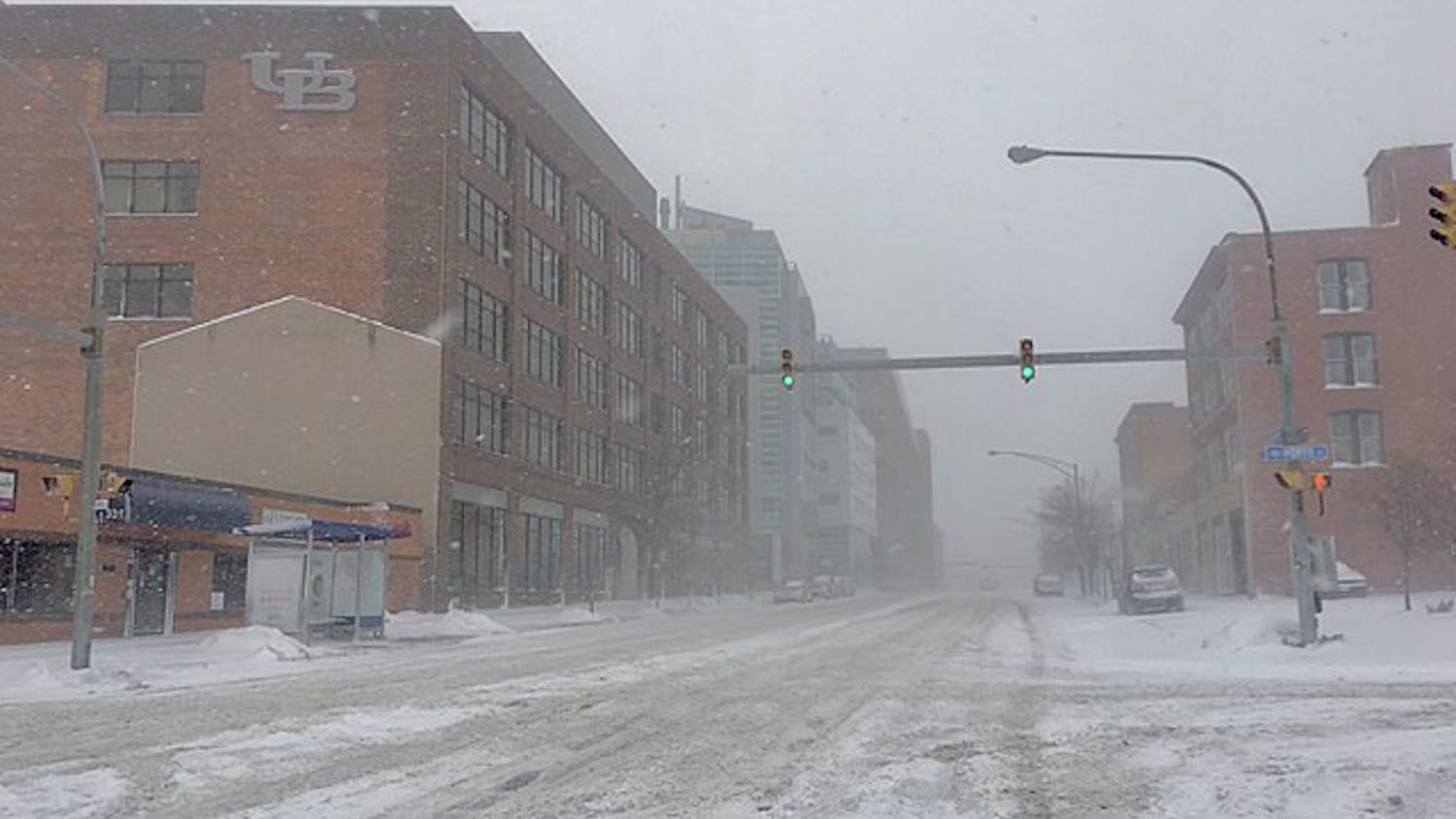When the devastating 8.9 magnitude earthquake followed by a tsunami shook Japan on March 11, its effects truly rippled halfway around the world. The University at Buffalo has approximately 89 students from Japan, according to International Education Services, many of whom were personally affected or had families impacted by the disaster.
The earthquake was one of the most powerful ever recorded. The Richter Scale is logarithmic, which, for example, means that a level eight earthquake is 10 times more than a level seven, or 100 times more powerful than a level six.
Sayaka Ishida, a senior in the School of Management, has family in the Fukushima prefecture, where the earthquake hit. However, her father was in the Iwate prefecture at the time of the earthquake and tsunami.
"He saw the big tsunami coming from the ocean and destroy everything. It was so scary looking at houses on fire flowing on big waves. Many people were trying to run away from it, but some people were too late or stuck in a traffic jam," said Ishida in an email. "After the earthquake and tsunami, he thought that it was better to go home than stay there…but he said it was really hard because streets and bridges are destroyed and gas stations and convenience stores are closed. It took about 20 hours to go home."
The earthquake happened when the solid rock layer beneath the floor of the Pacific Ocean slid beneath the solid rock that makes up Japan. This sliding, or "subduction" in this case (because one layer shifted beneath another), caused a great amount of friction, according to Greg Valentine, a geology professor at UB.
"Stress builds up in the rocks until they snap, which is what makes the earthquake. The rock layers move very suddenly, which causes the overlying water to move as well…which causes the tsunami waves," Valentine said in an email.
Japan has endured a series of earthquakes in the past, so the country has been relatively prepared. From a number of accounts, the shaking was moderate and did not result in complete destruction.
"Over the last 40 years, Japanese building codes have been very strict and require very sturdy construction of buildings," said Thomas Burkman, director of Asian studies at UB. "Even in this 9.0 earthquake, buildings fared fairly well in the earthquake. The great loss of life came from the tsunami for which Japan was less prepared."
Tsunami waves move incredibly quickly, sometimes up to 500 miles per hour in deep waters, but slow down as they approach the shore because the sea is shallower. The back of the wave, which is still in deeper waters, is moving quicker than the front, which causes the water to mount as it approaches land and stay on shore for longer periods of time, according to Valentine.
"[Tsunamis] occur in that area every 1,000 years or so. There is little to do other than have sufficient warning (they had about 20 minutes) to move to higher grounds," said Michael Constantinou, a civil, structural and environmental engineering professor, in an email. "There is very little to do other than build elevated structures or just build away from the shoreline where waves are stronger."
Masaharu Iburi, the uncle of Akari Iburi, a junior English major and a Spectrum staff writer, lives in the town of Mikuni in the Niigata prefecture on the west coast of Japan. Although the earthquake struck Japan on March 11, he did not hear about the situation until March 15 due to his distance from the disaster. However, when predictions of another earthquake in the Japan Sea arose, his concern mounted quickly.
"We didn't trust what the government was telling us about the situation. We knew they weren't being honest with us," Masaharu Iburi said. "I really believed Japan was going under; it wouldn't survive a second earthquake. The whole country is in panic."
Shortly after the earthquake and tsunami struck, news of a radiation leak from the Fukushima Daiichi nuclear plant surfaced. Masakazu Iburi, another uncle of Akari Iburi, believes that the damage from the radiation and tsunami will take at least 20 years to clean up.
"Japanese people have, let's call it, a nuclear allergy because of their own experience with atomic bombs and knowledge of the consequences of radiation are very widespread," Burkman said.
Ishida's family currently lives in the Fukushima prefecture and is considering moving to another area that is not affected by the radiation. They are currently saving light, gas, food, water, paper and many other supplies.
"It is really scary to live in such a close area from that nuclear power plant," Ishida said. "The government decided not to sell any milk and vegetables from these affected areas… there are not enough supplies. They have to line up at 5 a.m. to get one single cup noodle."
According to Ishida, the economy has been enormously affected. Toyota and Honda have temporarily suspended production, and the Bank of Japan, Sony, and Toshiba are currently enduring the disaster, also.
"Japanese economy is in panic right now… it takes a long time to go back to normal," Ishida said.
UB's department of international education services has worked with a number of international students who have endured natural disasters in the past, but Ellen Dussourd, director of international student and scholar services, believes this has been the worst in recent history. On March 12, international education services contacted each of the UB Japanese students in the Tohoku region in northern Japan. Many reported that their homes had been damaged, but their families were fine, according to Dussourd.
In the past, the department has worked with students to deal with tragedies on a case-by-case basis. According to Dussourd, the best way for others to assist with the disaster is to donate to a charity such as the International Red Cross. She admires the Japanese people's resilience, composure and selflessness in such a time of despair.
Email: features@ubspectrum.com




